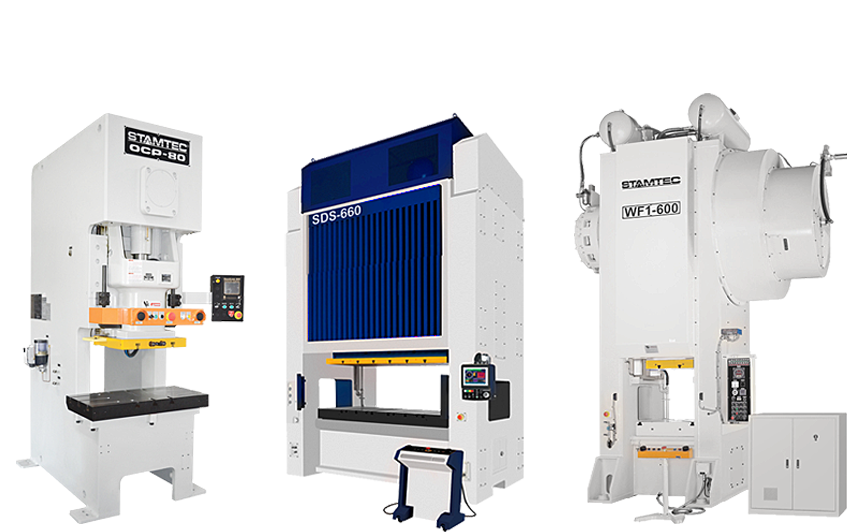
Your Stamtec press is humming along, working just as it should, when, suddenly, there’s a lube fault warning on the press controls, and production stops.
There’s no need to panic, but there are steps you can take to troubleshoot the issue and get your press back online.
Step 1: Very first thing to do is to check and make sure there’s enough grease in the grease cannister. If there’s not, add grease till it’s up to the proper level, making sure to use the external zerk fitting to do so. Do not try to take the plunger out to refill the cannister – this will only cause excessive air pockets and increase your problems. Cycle the pump and see if the lube fault is cleared, if not move to Step 2.
Step 2: If Step 1 tasks are completed but you still have a lube fault, the next thing you’ll want to do is bleed any possible air out of the system. Air pockets can occur between old and new grease levels as well as inside the lube lines. Bleeding the system is the only way to remove the air and ensure that grease flows properly. To do this, use the smaller set screw located on the bottom of the canister and open it up about half a turn. Tighten the screw once you see grease seeping out and let the pump continue through its cycle. You need to try bleeding the system two or three times to ensure all the air is removed. If the pump will not automatically turn on, you may have to initiate a manual grease cycle through the press control. If the pump turns on but you don’t see any grease coming out, repeat the process until grease seeps out. If the pump will not turn on where you don’t hear the motor working, go to Step 4.
Step 3: If you’ve bled all the air out of the system, as outlined in Step 2, but you’re still getting a lube fault, you’ll want to check to make sure the grease is reaching the main lube distribution block. Lube block is located on top of the press so you’ll need a ladder and appropriate safety gear (if necessary). There will be one (1) large incoming lube line and multiple outgoing, smaller lube lines located on the block. Locate the large incoming line, loosen the nut and remove the line from the block. Cycle the pump to observe lube coming out of the line. If your pump is working, bled correctly but still not getting any lube out of the incoming line, you could have one of the following issues: 1) Air pockets in incoming line so keep cyling pump 3-4 times, 2) Bad pump – even though the pump was bled, it may not develop enough pressure to pump the grease up so you’ll need to replace the pump.
Step 4: If grease is reaching the distribution block but the lube fault is still displayed, check the electrical connections from the block to the control panel. To do this, unscrew the black connector on the lube distribution block, slide the cycle switch off the block leaving the cycle pin in the block. Imitate the cycle pin function by pressing and releasing to see if the signal reaches the press control. If it doesn’t, check all the electrical connections to make sure they’re tight enough and use a voltmeter to check the continuity of the switch. If the switch shows open, replace switch.
Step 5: If the wiring and switch check out fine and you still have a lube fault warning, the next thing to check are the outgoing (smaller) lines from the distribution block to each lubrication point. Look for crimps or other issues that could impede grease flow. If there are no visible obstructions, you can try to see if there is a blockage on these lube lines. To do this, assure that the main incoming lube line is plumbed in and secure. Proceed with loosening and removing each outgoing line, one at a time. Disconnect a line, cycle the pump and see if the fault goes away. If the fault stays, reconnect previously disconnectedf line and move to the 2nd line. Repeat the steps until the fault clears. If and when the fault clears, the removed line is the suspect with a possible blockage inside the line. Try blowing air through the line or possibly replacing.
Step 6: If the outgoing distribution lines are OK but the lube fault warning still appears, check and clean the lube distribution block. Remove the block from the press, take it to your parts washer, soak and scrub it with a wire brush. Use an air hose to dry the block and then reattach it to the press and test it out.
After all these steps, if a lube fault warning is still displayed, reach out to Stamtec’s Service Department via